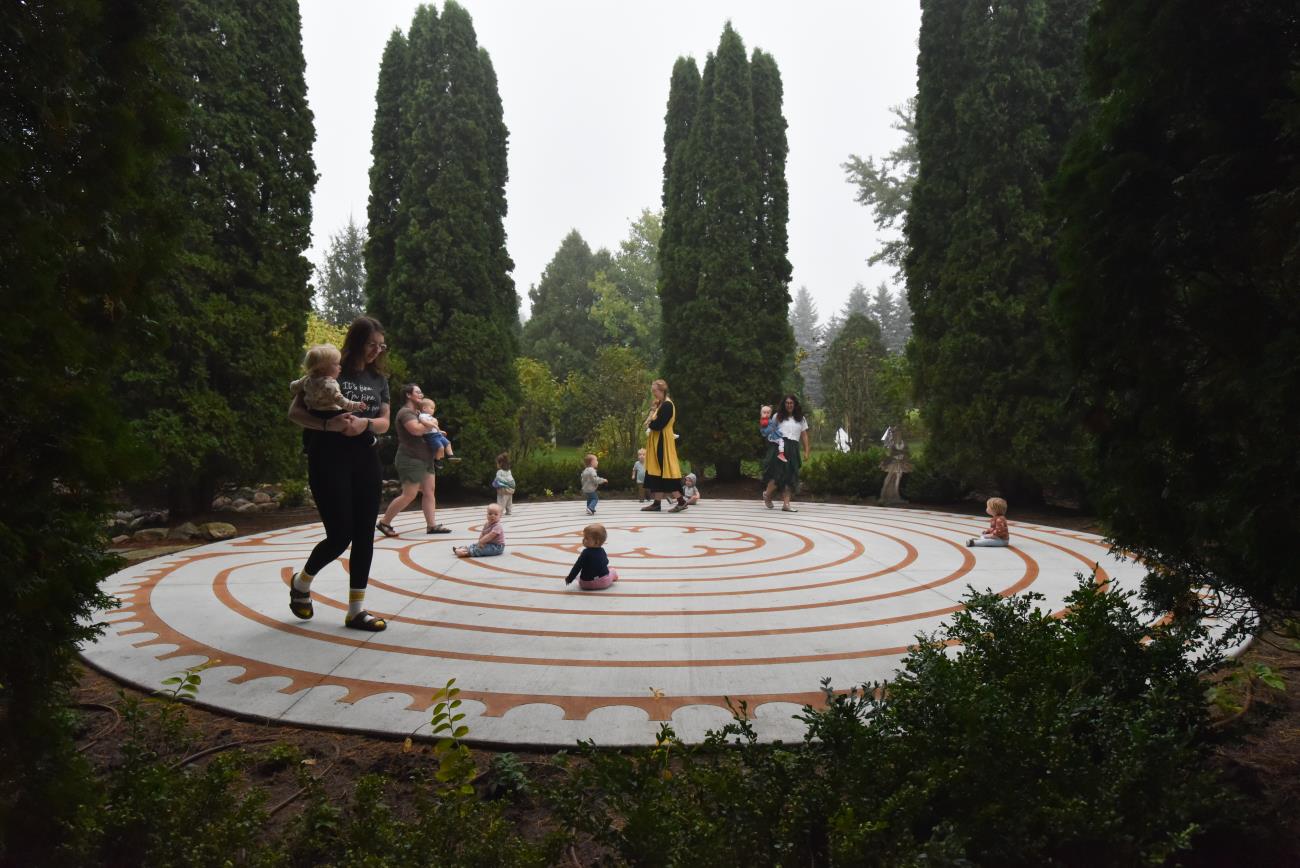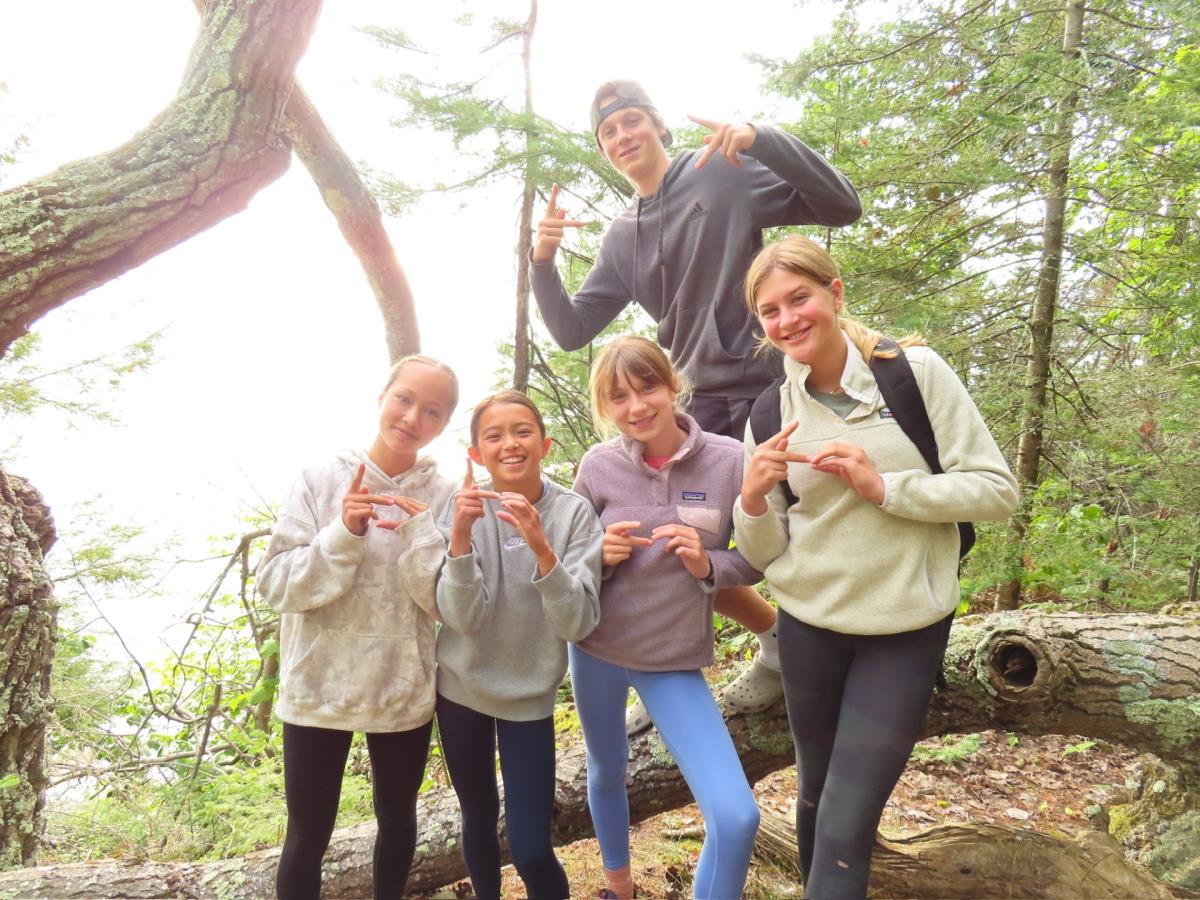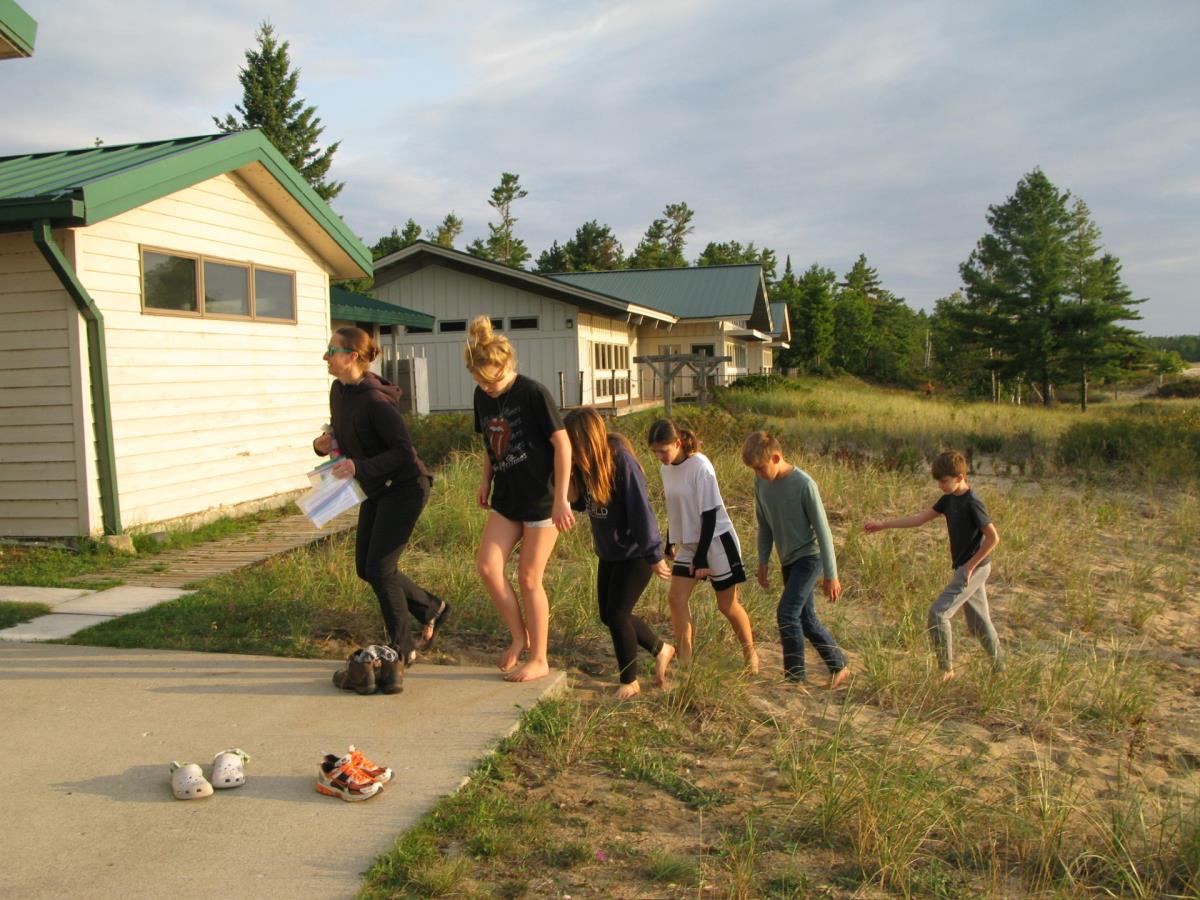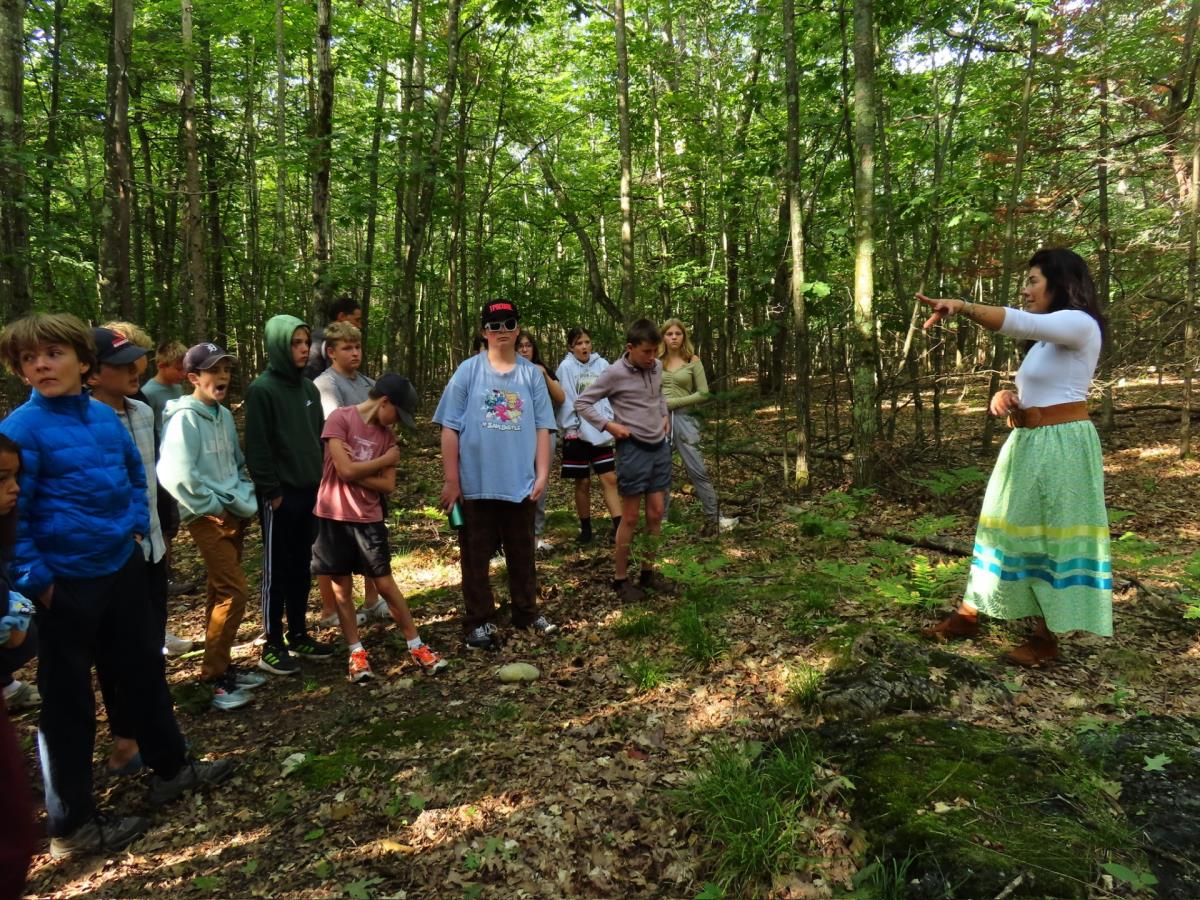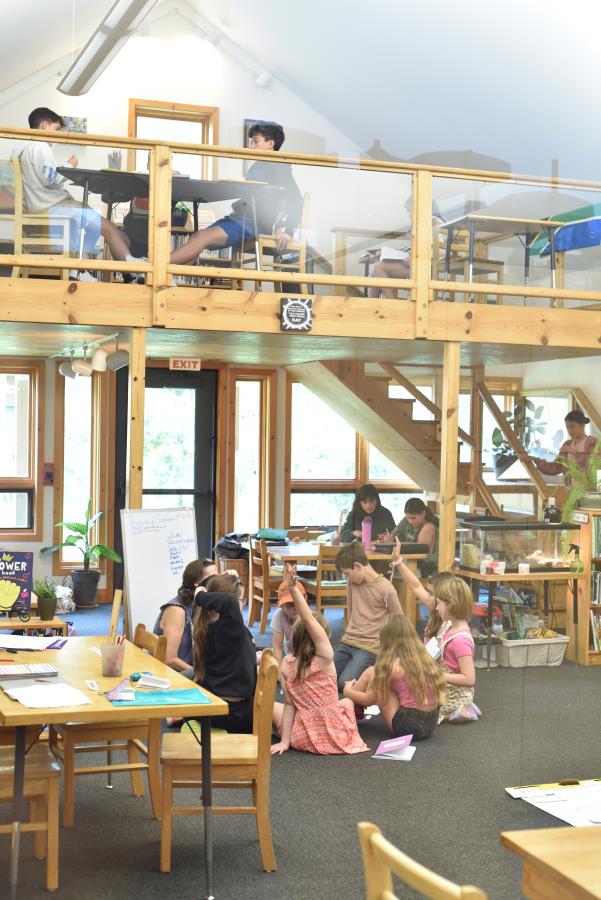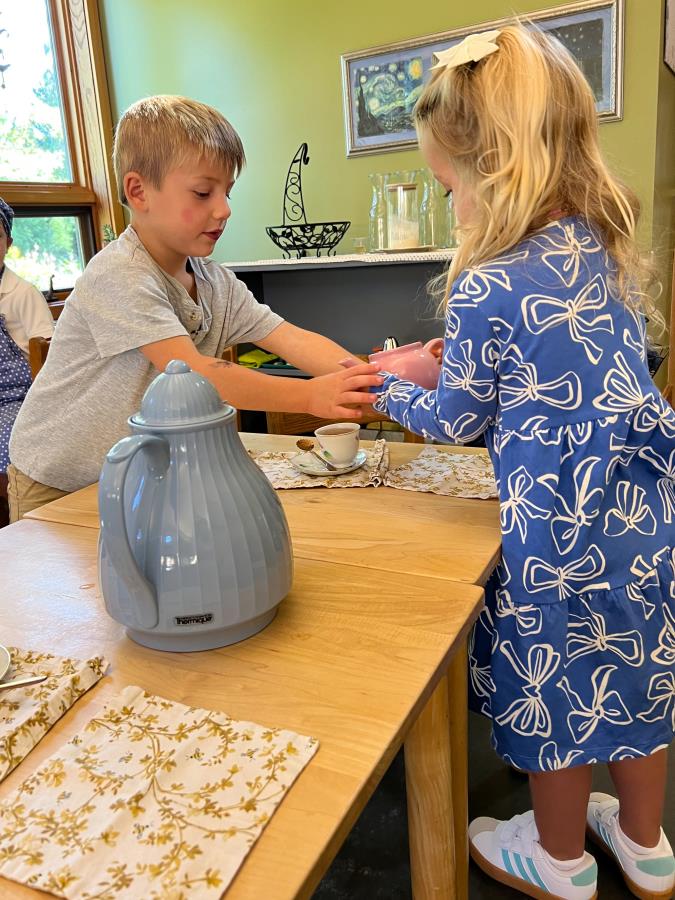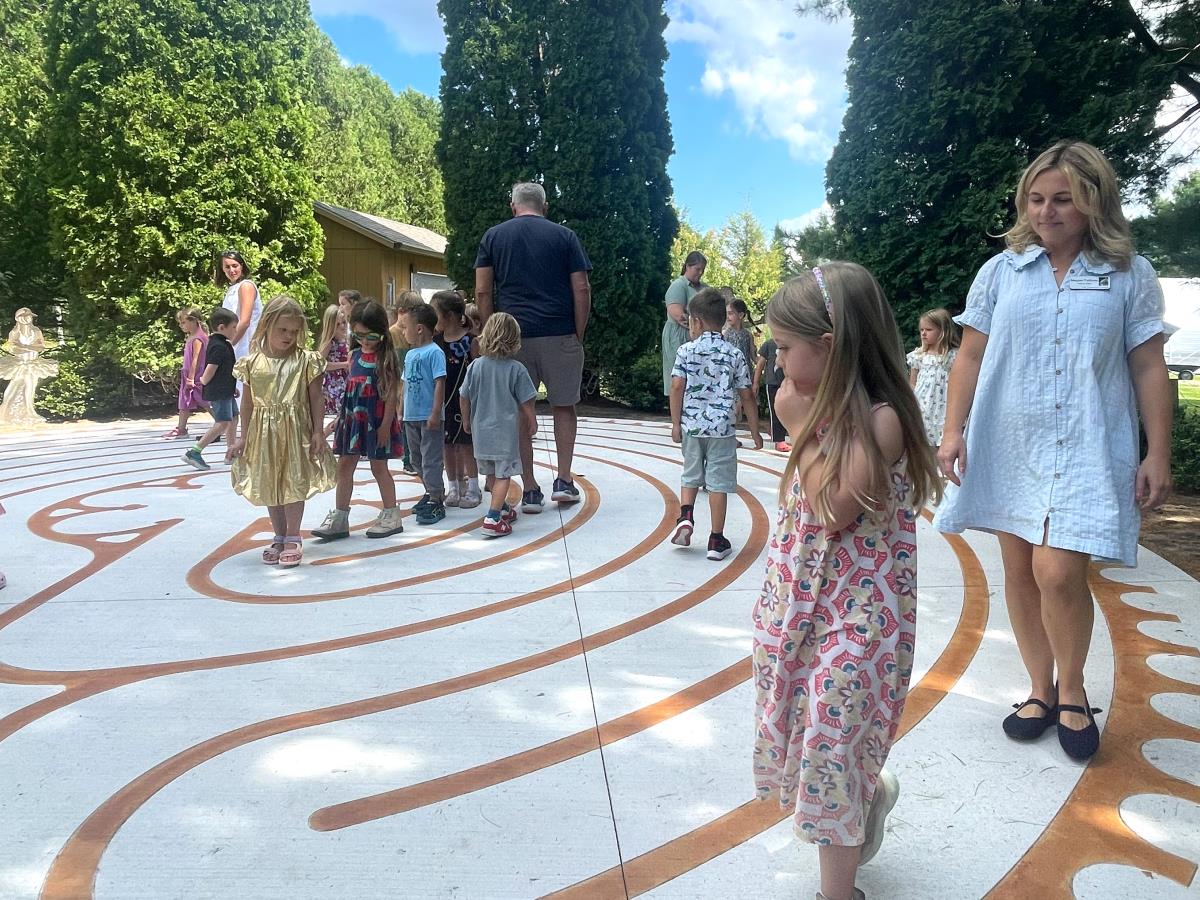We are excited about the new addition to our outdoor learning environment, a beautiful, winding labyrinth. This offers our students a designated space for meditation, reflection, and quiet moments in their busy school day and fits well with our new MindUP curriculum. It's a natural extension of our Montessori philosophy, which values a child's need for purposeful work and a connection to the natural world.
Unlike a maze, the labyrinth has a single, non-deceptive path to the center and back out again. This makes it an ideal tool for children to practice mindfulness and self-regulation. By following the path with a calm body and an open mind, students can quiet their minds and reduce anxiety, strengthen their focus and concentration and develop a stronger sense of self-awareness and peace.
The new labyrinth is already a beloved part of our campus. It was nice to watch many of the students walking the labyrinth as a part of our recent International Day of Peace celebration. During their recess time, children can be seen walking the path deliberately, finding a quiet moment for themselves. It serves as an excellent resource for our peace corner, offering a valuable tool for children who need a moment to collect their thoughts. We are finding more ways to use it every day and hope you get a chance to stop in and take a walk with your child sometime. Thank you very much to the Daffodil Circle members for making this beautiful addition a possibility.
In the second week of school, Compass junior high students and teachers embarked on a trip to Beaver Island. We took the school vans and drove to Charlevoix, where we then took a ferry out to the Island.
Once we got there, we visited the maritime museum and the print shop. They were both amazing experiences, and everyone had a great time. After, we headed over to the CMU Biology station, where we stayed throughout the course of the trip. We got to meet Alex, Alliss, and Jaki, the employees that worked at CMU. We ended our first day with sunset volleyball and a delicious dinner curated by our favorite Jaki.
On the second day, we got to meet with the Beaver Island 7th and 8th-year students and their principal, Mr. Will. We learned about bug ecology and dune life. We also visited Miller's Marsh and studied the soil there. We then headed to the Big Rock, which is actually made of a stone that's from Ohio, but the glaciers carried it all the way to Beaver Island! We fit all of the students from both schools on the rock.
On our last day, we met with an insightful person named Shelbi. She told us about Native American culture and history. She then took us to the stone circle, which is an arrangement of ancient stones. The circle is made up of about 200 stones. No one knows exactly why the stones were placed there, but people know that it’s significant. We then had some time to kill, and we found out that our friends from the Beaver Island school were having a soccer game, so we showed up at their school to watch them, but sadly, we couldn't stay for the soccer game, but we got to see the high school volleyball team play. We said our goodbyes and made our way to the ferry. We were sad to leave, but the memories we cherish will last for a lifetime. Thank you to our guides for making this experience possible.
Student Biographers: Ava and Gwendolyn
Student Photographers: by Olivia, Vaughn, Adrienne, and Hank
Sit in a Montessori classroom at any level, and you will find a beautifully prepared and organic orchestration of children engaging with one another, concentrating independently on their chosen activity, or interacting in a small group lesson with their trained guide. If you think about how these environments function, you will quickly see social and emotional learning in plain sight.
In a time when increasing emphasis is being placed on the importance of learning models that include opportunity for learning not only academics, but also how to relate with one another through collaboration, agency, and self-regulation, Montessori was a century ahead of her time. It is truly embedded in the educational model in several ways:
Mixed Age Classroom Environments:
In a Montessori classroom, the oldest members of the community provide guidance and support for the younger children. This symbiotic relationship is mutually beneficial, giving confidence and opportunity for empathy to the mentor, while offering comfort and nurturing to the mentee.
Agency Over Learning:
Learners in Montessori environments are empowered to make their own choices for their work with the guidance of caring adults and peers. This fosters independence, confidence, resilience, self-regulation, and relationship building.
Grace and Courtesy:
At the youngest ages, learners learn how to live in community. Lessons in Grace and Courtesy are explicitly taught to children, allowing them to build the skills for caring for themselves, one another, and contributing to their community in a positive way. You might see a Guide sitting on the floor in a circle with four children, saying to the group, “Today, I am going to show you what to say to someone who hurts your feelings.” This is modeled by the Guide first, and practiced by the children. This way, when the child has an experience of hurt feelings, they have been pre-coached in what to say and do.
Mindfulness:
Taking moments of silence to listen to the rain, waiting patiently for your name to be called to come join the circle, and participating in learning about the brain and how to learn skills of self-calming and regulation, empower children to become self-aware and have tools to know what to do when they feel overwhelmed or anxious.
This year, in addition to all the built-in social and emotional learning in our prepared environments, The Children’s House and Compass Montessori Junior High are implementing the MindUp curriculum, which intentionally teaches children about their brains, understanding perspectives of others, expressing gratitude, and tools for self-regulation.
In our lightning-fast-paced digital world, the importance of social and emotional learning is more important than ever. The inherent ways Montessori education offers real opportunities for this learning is another clear demonstration of the visionary that Dr. Montessori was.
